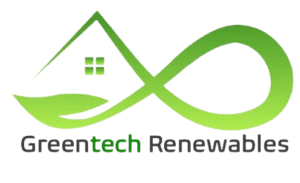Energy price caps demonstrate a commitment to consumer protection and fair pricing. These measures prevent sudden price increases, providing stability and predictability.
Price cap adjustments directly impact household budgets, influencing spending habits. Understanding past changes and the effects of adjustments helps consumers appreciate the importance of ongoing policy updates to ensure fair pricing.
It is crucial to stay informed about how price caps have evolved to protect consumer interests and support market sustainability.
Table of Contents
ToggleHistorical Changes in Price Caps

Energy price caps have evolved over the years in response to changes in the energy market. These fluctuations aim to protect consumers from sudden price increases by setting limits on default tariffs.
Price caps provide stability and predictability, ensuring fair pricing practices and shielding consumers from unjustified hikes. Regulatory bodies strive to balance consumer affordability with market sustainability through these measures, promoting a competitive yet consumer-friendly energy market.
Impact of Price Cap Adjustments
Regular adjustments to the energy price cap directly impact consumers' household expenses and financial planning. Fluctuations in the price cap affect the amount consumers pay for energy, leading to changes in their monthly bills. This influences budgeting and spending habits.
The government's response to these adjustments is crucial, demonstrating its commitment to shielding consumers from volatile energy prices. By reviewing and updating the price cap frequently, the government aims to ensure fair pricing for consumers while taking into account wholesale energy costs.
Future Trends in Price Caps

Anticipating the evolution of energy price caps is crucial for understanding future consumer energy costs. Regulatory challenges and innovations in price cap mechanisms will shape upcoming trends.
Consumer advocacy remains essential to protect households from volatile energy prices. Market dynamics will influence the direction of price caps, balancing consumer needs with energy market realities.
Policymakers must adjust price cap mechanisms to meet evolving energy sector demands while safeguarding consumer interests.
Frequently Asked Questions
How Does the Energy Price Cap Impact Small Energy Suppliers?
The energy price cap ensures fair competition among small energy suppliers, promoting innovation and service improvements. However, customer loyalty may decrease as they prioritize seeking the best prices available.
Are There Any Exemptions From the Energy Price Cap for Certain Customers?
Customers exempt from the energy price cap may include vulnerable individuals, those on prepayment meters, or customers with special circumstances. Eligibility criteria are determined by Ofgem to ensure fair treatment for all consumers.
How Do Energy Companies React to Changes in the Price Cap?
Energy companies adjust their offerings to align with changes in the price cap to stay competitive. They prioritize enhancing customer service, promoting energy efficiency, and exploring innovative pricing structures.
What Factors Influence the Decision to Adjust the Price Cap?
Adjusting the energy price cap is influenced by changes in the regulatory environment and market competition. These factors are crucial in maintaining the balance between consumer protection and industry dynamics.
How Does the Energy Price Cap Affect Renewable Energy Tariffs?
The Energy Price Cap can impact renewable energy tariffs by influencing the cost competitiveness of renewable energy options. This can affect renewable energy incentives and tariff comparisons, potentially shaping consumer decisions on energy sources.



